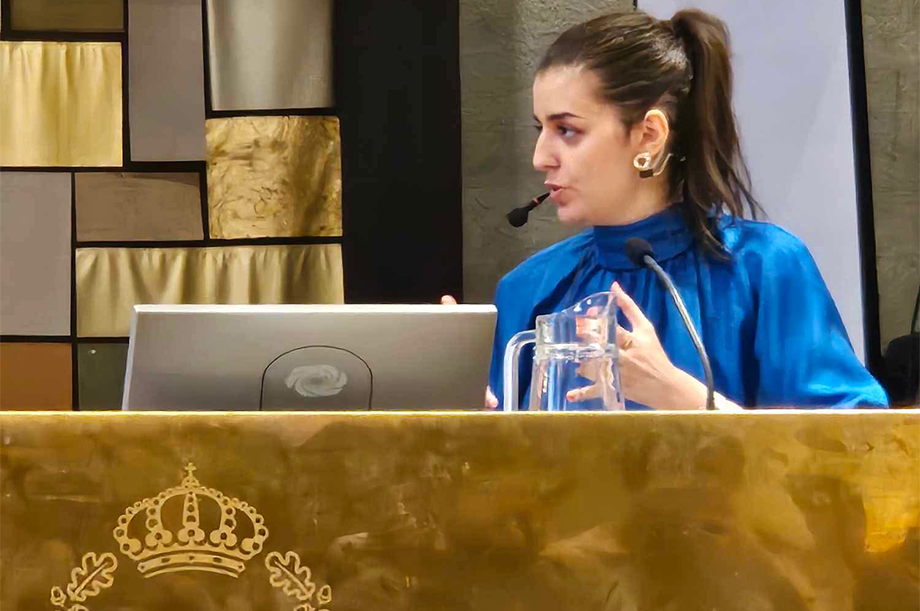Leveraging novel data sources for travel behavior modeling

Amani Jaafer is a new doctor at the Department of Urban Planning and Environment, Division of Transport and Systems Analysis. She publically defending her doctoral thesis in Transport Science on Thursday 24 April 2025.
What is the topic of your Doctoral Thesis?
My doctoral thesis is in Transport Science, with a focus on leveraging novel data sources, such as GPS records and mobile network data, for travel behavior modeling. It explores urban mobility patterns in a European context, with an emphasis on policy implications and sustainability.
Why did you choose this topic?
During my engineering studies, I developed a strong interest in sustainable and smart cities. This interest grew from a desire to better understand the environment we live in and contribute to shaping the future we are building. What drew me to this field is the way theoretical models and data are connected to real-life applications, you can see their tangible impact on people's lives. It's a field where abstract concepts translate into meaningful, visible outcomes.
What are the most important results?
I have been involved in three projects, each of which has led to important findings.
The first project, from a methodological perspective, showed how we can make an established activity-based travel demand model more flexible to accommodate new data sources like mobile network data without replacing the model entirely. By making the right improvements, we demonstrated how existing models can be adapted and extended rather than discarded.
We also explored how to align the model with the types of data available, adjusting its structure to extract meaningful insights. Through this new framework, we were able to observe, in practical terms, how the COVID-19 pandemic affected mobility patterns in Stockholm, with a focus on income-based disparities between high-income areas (Täby-Danderyd), and low-income areas (Tensta-Rinkeby).
The results highlighted how mobility was significantly more impacted in low-income neighborhoods. Residents in these areas had less flexibility, made fewer trips, stayed more localized around their homes, and visited central areas less frequently. This demonstrated the critical role that socioeconomic factors play in urban mobility during crises.
The second project focused on cycling and aimed to understand the factors influencing route choice among e-bike commuters in Nijmegen, Netherlands. We explored how both efficiency and aesthetic experience shape the way cyclists choose their routes. This work brought valuable insights into what cyclists truly value, knowledge that can help design better cycling infrastructure. For example, we found that routes along water bodies were highly preferred, while routes through dense urban areas were generally less favored.
Did you come across something unexpected during your thesis research?
In the first project, residents of low-income areas traveled to the city center significantly less than those from high-income areas during the COVID-19 pandemic. Individuals in low-income areas may have faced job losses, reducing their need to commute.
In the Istanbul case of the third project, we observed that cycling travel time was not significantly affected by gender, unlike in Tallinn and Braga. One possible explanation is the lower percentage of female cyclists recorded in Istanbul’s trip data, which may have limited the visibility of gender-based differences in cycling behavior.
Who will benefit from your results? What kind of impact may it have on surrounding society?
Urban and transport planners can benefit greatly from this work, as it offers evidence-based insights derived from novel data sources. These insights support the design of infrastructure that promotes cycling and addresses critical issues related to system resilience and equity. Transport modelers also stand to gain, particularly from the first project, which demonstrates how new data can be integrated into existing travel demand models, enhancing flexibility while maintaining the transparency of well-established frameworks.
The broader impact lies in supporting the development of a more sustainable transport system and helping policymakers reach their goals by adopting targeted strategies.
What will you do next and where can one reach you?
I recently started working as a Data Scientist at Savantic, an AI consultancy based in Stockholm. We work on a variety of client projects across sectors such as traffic, retail, medtech, and finance, as well as engage in research and development initiatives. This role is a continuation of my commitment to extracting meaningful insights from data while staying up to date with the rapid advancements in machine learning and AI models.
